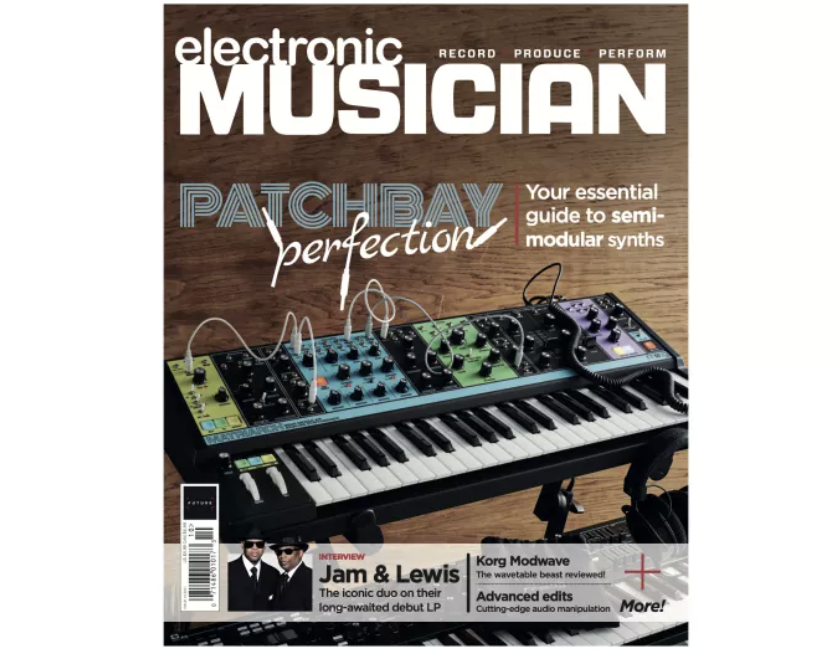How to master the Korg Minilogue and Korg Monologue
A deep dive into these surprisingly different keyboards

Korg’s Minilogue and Monologue synthesizers combine an all-analogue signal path with genuine affordability. And thanks to Tatsuya Takehashi’s insightful approach to both circuit design and mass production, nearly anyone can take home a proper analogue polysynth without breaking the bank.
Although the monologue may appear to be a simplified Minilogue, it actually has its own unique sound, thanks in part to a different filter circuit and extended LFO features. This month, we’ll dive into the features of each of the synths, both of which offer far more than their straightforward front panels imply.
A few minutes with the Minilogue
Oscillators
A big part of the Minilogue and monologue sound comes from the flexible oscillator design, which includes adjustable waveshapes for all three standard waveforms—sawtooth, triangle and pulse. In addition to the pulse-width adjustment that we know and love, sawtooth and triangle waveshaping offers a greater sonic range than most analogue synths, vintage or modern.
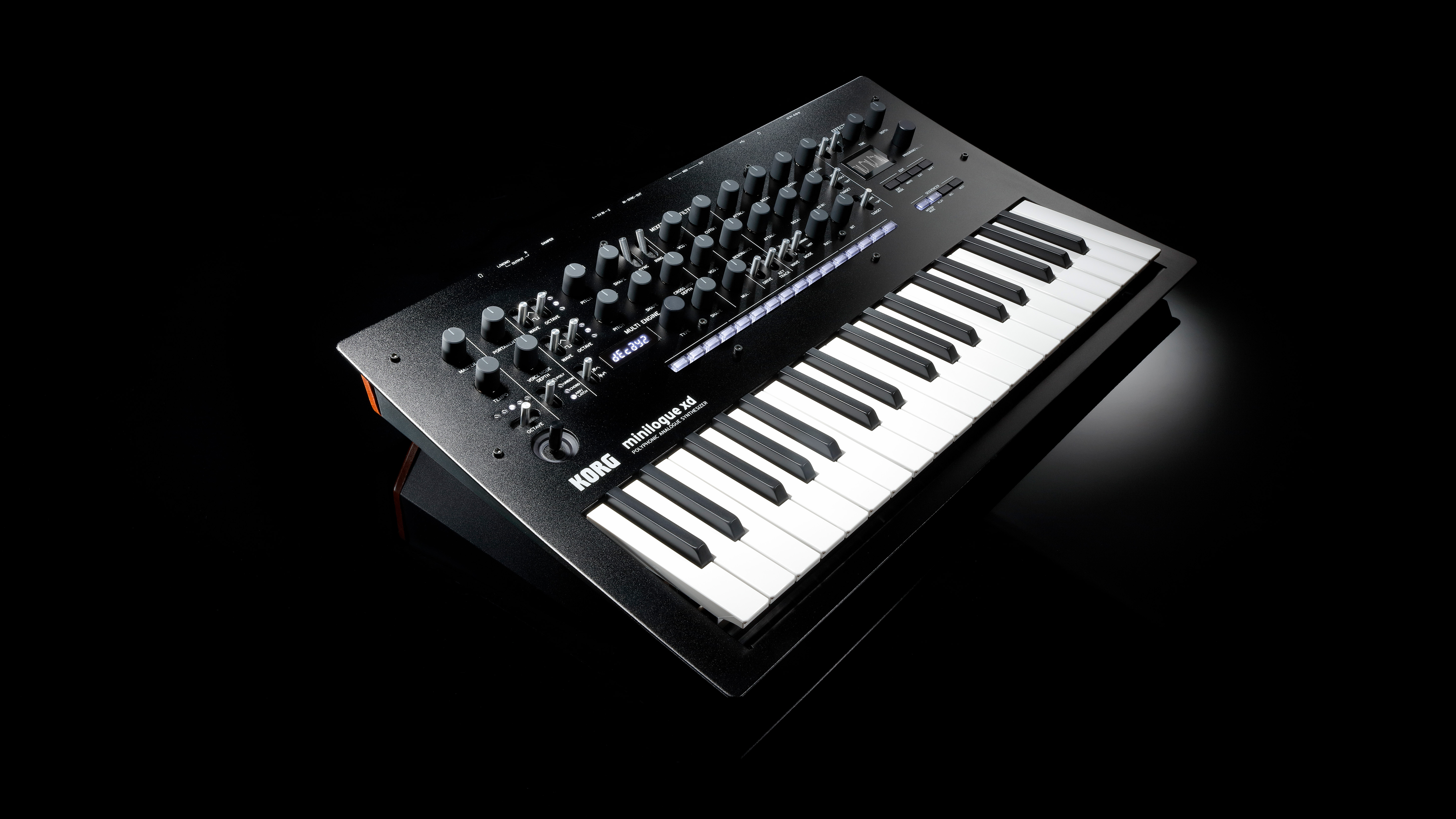
The 18 best synthesizers 2020: keyboards, modules and semi-modular synths
In the case of the triangle wave, turning the Shape knob to maximum adds higher-frequency content while strongly emphasizing the third and fifth harmonics. The sawtooth Shape control morphs the waveform closer to a square-like shape, which is evocative of the modern Moog square/saw blend that serves well as the basis for fat and dirty leads. While the onboard oscilloscope clearly shows what’s happening to the shape, it also helps to know that turning the knob gradually attenuates the sawtooth’s even-numbered harmonics, emphasizing the odd partials.
Both instruments offer ring modulation and hard sync on oscillator 2, which further extends their spectral range. On the Minilogue, there is a separate control for applying envelope modulation to the pitch of oscillator 2, which is essential for making the most of those two effects.
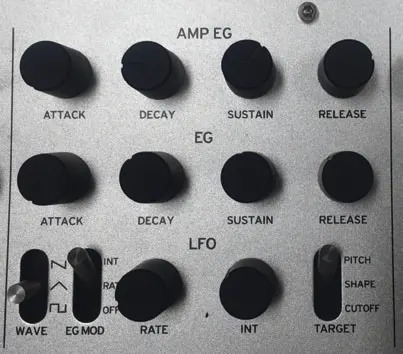
This envelope is also useful when creating tom and kick sounds. For those types of percussion, turn off oscillator 1, set oscillator 2 to a plain triangle wave and give the auxiliary envelope an instant attack, zero sustain, and medium decay and release. Depending on your envelope modulation amount, you can get everything from punchy kicks to disco toms.
Get the MusicRadar Newsletter
Want all the hottest music and gear news, reviews, deals, features and more, direct to your inbox? Sign up here.
Another distinctive feature of the minilogue’s oscillator section is cross-modulation—an alternate term for analog FM—with oscillator 1’s output modulating the frequency of oscillator 2. It’s important to note that cross-mod FM is very different from the digital FM found on the Yamaha DX7 or Ableton Operator, but it’s great for nasty techno and electro effects.
Filters
The Minilogue and monologue have very different filters, with the Minilogue sounding a bit more like a Curtis filter, with both 2-pole (12 dB/oct) and 4-pole (24 dB/oct) options. When you crank up the resonance, the filter will self-oscillate in both modes, allowing it to function as a third sine-wave oscillator when keyboard tracking is set to full. (Set the flip switch to maximum.)
That said, the Minilogue's filter circuit exhibits a distinctive low-frequency roll-off when the resonance is increased above 25 percent. While some users may find this undesirable, the upside of the design is that it can be used as a pseudo highpass filter, especially when envelope modulation is set to zero.
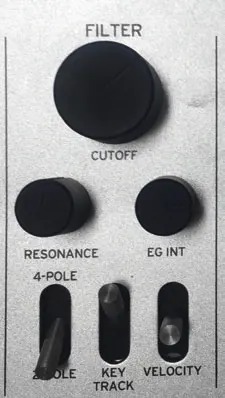
Pro Tip: Because the filter cutoff can also be controlled via velocity, with 50 percent and 100 percent options available, you can create cool stepped-filter effects by leaving envelope modulation at zero, increasing the resonance to 40 to 70 percent, and setting cutoff to 50 percent. With velocity enabled, your playing style determines the pattern of the filter sequence.
Modulation
While the Minilogue's envelope options are a bit basic—two ADSRs, one dedicated to amp and the other for all other envelope modulation duties—the second envelope offers two routings that you don’t often see on mainstream synths: It can modulate either the rate or the intensity of the LFO modulation.
If you modulate the LFO intensity with the envelope, you can re-create the old-school polysynth effect of “delayed vibrato.” That is, by setting the envelope sustain to maximum and decay to zero, you can fade in vibrato as you hold a note by giving the envelope a long attack. As for LFO-rate modulation, it’s more of a sound effect when applied to pitch, but sounds lovely applied to the oscillator shape parameter in a subtle manner.

Speaking of the LFO, it can only be routed to three destinations, pitch, cutoff and waveshape. Confusing things slightly is the Minilogue's unorthodox implementation of the sawtooth wave, specifically when used to modulate the oscillator’s saw-tooth waveshape. Here, if the oscillator sawtooth shape parameter is set to zero and sawtooth modulation is applied to the waveshape, it will sound like a triangle wave. This is because the LFO sawtooth wave folds back on itself in instances like this.
So, if you apply that type of modulation to the sawtooth waveshape of an oscillator, the results will be slightly unpredictable. Interestingly, this effect doesn’t occur on the triangle or square waves, which function reliably in repeating fashion.
External input
The Minilogue also includes an external input for processing audio through its filter, amp and delay sections. This is a rich resource for unusual effects, and in conjunction with the sequencing tools described below, the Minilogue is ripe with potential as an effect that will keep listeners guessing.
Delay
The Minilogue’s delay is digital, but the feedback loop includes an analogue highpass filter that can be configured in a few ways, giving it a lot of versatility. Here are the specifics about its three modes.
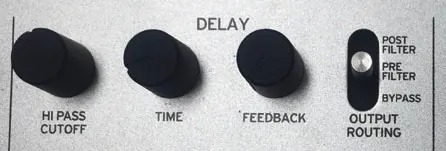
Bypass: Delay and filter are left out of the Minilogue chain for a completely analogue signal path.
Pre Filter: This places the highpass filter in the feedback loop, so every repeat is a little thinner and grungier. For a classic, non-filtered delay, leave the cutoff at minimum. For a dramatic disintegrating delay, use a longish delay time, set the highpass cutoff at 50 percent and increase the feedback above 75 percent. The result will be a seemingly endless echo that dissolves into a mess of earsplitting distortion, which works well in dance music breakdowns and fadeouts.
Post Filter: This mode puts the entire delay after the highpass filter, which is handy for thinning the sound of your patches. It’s worth noting that when the delay and feedback are set to zero, you can use the highpass on its own for buzzy leads and dramatic noise whooshes.
If you’re using the Minilogue's external input for another instrument or as a processing device on your DAW, be sure to explore these features.
Voice mode
Though the Minilogue's synthesis engine can stand on its own, the Voice Mode options are what really separates it from every other modern polysynth. The essentials are covered in the manual, but here’s how to make the most of them in conjunction with the Voice Mode Depth parameter.

Poly: This is the standard polyphonic mode that most owners will use for daily work. Here, the Depth parameter will invert held chords as you play them, which creates interesting glissando effects if you twist the Voice Mode Depth knob quickly while performing.
Duo: This switches the synth to duophonic mode, allowing for two-voice performance with four oscillators under each key. In this case, the Depth knob adjusts unison detuning for the oscillators on each voice.
Unison: This puts eight oscillators on a single voice. Using a standard sawtooth and setting the depth higher than 50% delivers the ubiquitous supersaw effect.
Mono: As an alternative to single-voice monophonic mode, the Depth knob gradually adds additional stacked voices one and two octaves below the original note.
Chord: Tech house and techno fans will appreciate the parallel chords available in this mode. Turning the Depth control selects between fourteen chord options, including sophisticated jazz voicings like Maj7♭5. Keep in mind that this mode works extremely well with motion sequencing on the Depth knob.
Delay: Back in the era when hardware digital delays cost hundreds of dollars, it was common to use MIDI for echo effects. That’s what this effect does, with quantization values down to 1/192th notes, which are so tight they can create static flange and phased effects. In the 1/64 to 1/32 range, this Voice Mode can be used to enhance percussive riffs.
Arp: This is where the Minilogue's arpeggiator is tucked away, with the Depth knob selecting between thirteen pattern types.
Sidechain: This odd but useful mode lowers the volume of held notes when new notes are played, with Depth controlling the intensity of the effect. At maximum settings, it will mute held notes in a tricky way that’s great for unusual and complex chord riffs, but it requires a bit of practice to master. This mode is also useful when simulating monophonic low-, high-and last-note priorities.
Sequencer
The Minilogue’s and monologue’s sequencers provide four tracks of motion sequencing for automating multiple parameters. The primary difference between the two implementations is that the Minilogue's sequencer is polyphonic.
There are a few subtle applications for the sequencer that may not be immediately apparent. For example, you can use motion sequencing to record parameter patterns without including note sequences, then use it as four user-definable LFOs while you play chords or riffs in real-time.
If you don’t mind doing a bit of programming, you can create minute sine-wave-like patterns and apply them to Delay Time for extreme chorus and flange effects. I’ve done this with my own patches, though it took a few tries at slow tempos to get it right.
And don’t miss out on this: The motion sequencer can modulate the Voice Mode Depth parameter. You can get very creative with this when using the Poly mode’s inversion feature while performing chords.
Pro Tip: Setting up a motion-only parameter sequence (with no note information) in conjunction with the arpeggiator voice mode provides extremely sophisticated performance and/or generative possibilities, especially in conjunction with the delay.
Know your Monologue
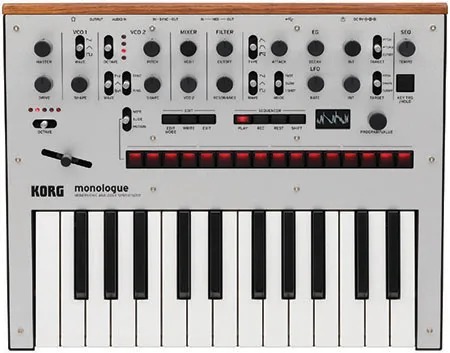
When the instrument was first announced, many keyboardists expect the Monologue to be simply a one-voice Minilogue. Although the Monologue shares much of the Minilogue’s aesthetics and many of its synthesis innovations, it’s a very different beast under the hood. In fact, the two synths are so sonically different that you can own both without feeling a sense of redundancy.
The most obvious difference is that the monologue is clearly optimised for use as a bass instrument, which is evident from its E-to-E keyboard layout (which matches the open strings of a bass guitar).
Submenu
On the M, the Edit Mode submenu is largely devoted to mundane tasks like pitch bend range, portamento, sequence editing and SysEx dumps. On the Monologue, this menu accesses a wide range of parameters that simply wouldn’t fit on its front panel.
More details are in the sections below, but the feature that really stands from other modern monosynths is the monologue’s ability to select from 32 microtuning and scale modes, which include Werckmeister and Kirnberger temperaments as well as 12 user-editable options.
Oscillators
While the Monologue’s oscillator circuits are identical to the Minilogue's, with the same shaping options available for both, only ring mod and sync are available, but not simultaneously. Cross-modulation is absent as well.
That said, the actual waveform options for each oscillator are slightly different, with saw, triangle and pulse available on oscillator 1 and saw, triangle and noise available on oscillator 2. This makes the monologue a bit less flexible than the Minilogue, but it doesn’t limit its sound all that much.
Filters
The monologue’s filter circuit is radically different from the Minilogue, with a much more aggressive and warm character that is reminiscent of the Korg MS-20.
The filter also self-oscillates with high resonance settings, but it’s a tad beefier than the Minilogue.
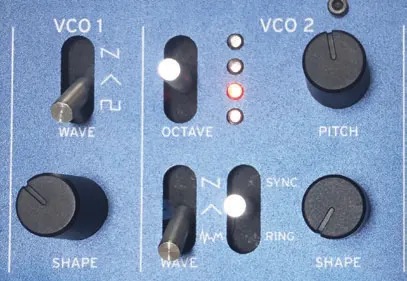
Keyboard tracking and velocity sensitivity may appear to be absent, but they are readily available: You will find them tucked away under the Edit Mode menu under button #4.
Modulation
In many ways, the Monologue’s LFO is far more flexible than that of the Minilogue, thanks to the inclusion of both audio-rate modulation (which greatly offsets the absence of oscillator cross-mod) and 1-shot mode. The power of fast LFO modulation is truly impressive as it allows for sideband generation and bit-crushing tricks, as when you apply an audio-rate square wave to the filter cutoff, with a touch of resonance. An example of that effect can be heard from preset 035, Dis-emvowel. Check out what happens when you subtly adjust the LFO rate and filter cutoff.
The 1-shot mode option makes the LFO stop after one cycle. This allows it to be used as a second envelope when needed, with the sawtooth functioning like a simple decay envelope, the triangle simulating an attack-decay “wow,” and the square wave providing a little hiccup effect. It all depends on how the rate knob is set, as it governs the overall speed of the envelope.
Drive
Whereas the Minilogue offers a delay effect, the Monologue integrates an analogue overdrive circuit at the end of the chain. This not only enhances the synth’s ability to nail the acid house sound, but it’s also useful when applied to patches that rely on an oscillating filter’s sine wave.
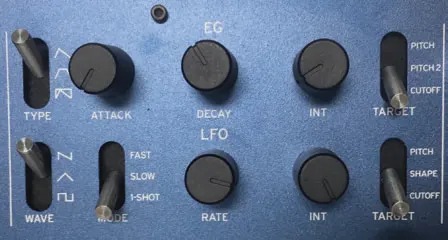
For example, if you set keyboard tracking to 100%, resonance to maximum, and tune the filter cutoff to the keyboard, you can make massive 808-style trap basses by adding just a whisper of drive to give it more presence.
Pro Tip: The monologue also includes an external audio input for processing signals through its filter, amp and drive circuit. So, if you need an analogue distortion effect for a visiting guitarist, just plug into the back of the unit and go.
Sequencer
Generally speaking, the Monologue’s Motion Sequencer is essentially identical to the Minilogue’s, with up to four sequences that can be assigned to any knob or switch, including the drive effect. Unlike the Minilogue, however, all sixteen steps are visible simultaneously and there is a slide function that makes 303-style swoops incredibly easy to program.
Because the steps can be individually toggled after recording the sequence, you can quickly experiment with syncopation by turning various steps on or off until you get a pattern that really grooves. It’s also handy for quickly customizing the factory sequences if you’re up against a big deadline.
One last tip for the Monologue that may be obvious to some but worth repeating: Since this is one of the few battery-powered analogue keyboards, it can be used anywhere. Try creating sequences or patterns in unusual places such as outdoors, at coffee shops, or while relaxing in bed. Changing your location can be a huge source of creative inspiration and the monologue allows for that.
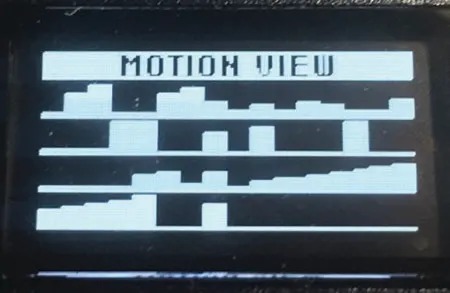
Understanding Ring Modulation
Simply put, a ring modulator generates sum and difference tones based on two frequencies, in this case, from oscillators 1 and 2. For example, if the oscillator tunings were 100 Hz and 300 Hz, activating ring mod will add two additional frequencies, one at 400 Hz (the sum) and another at 200 Hz (the difference); but that’s just in the case of sine waves, which (theoretically) have no harmonics. When using waveforms with greater harmonic content, ring modulation will provide dissonant and clangorous results.
Pro Tip: While it’s great for dissonant bell and chime sounds, ring modulation works especially well on octaves and fifths when the oscillators are both set to triangle waves with no shaping.
Hard Sync Revealed
Hard sync operates by synchronizing the start of the synced oscillator’s waveform to the frequency to the master oscillator. In the case of the Minilogue and Monologue, oscillator 2’s waveform is synchronized to oscillator 1: Therefore oscillator 1 controls the overall pitch, whereas changing the tuning of oscillator 2 creates different harmonic spectra, reminiscent of a flanger but much more metallic sounding.
To experiment with hard sync effects, turn the volume of oscillator 1 to zero, turn on hard sync, then sweep the pitch knob of oscillator 2 in conjunction with different octave settings and waveforms.
Pro Tip: Many keyboardists will recognize the squawk of hard sync from classic tracks such as “Let’s Go” by The Cars and “Atomic Dog” by George Clinton, which can be re-created by applying the auxiliary envelope to the pitch of oscillator 2 (while synced) and adjusting the attack, decay and envelope amount. Once you’ve got the hang of that, experiment with fast attack and decay settings with zero sustain on the pitch envelope. This is handy for adding sharp transients to a sound.
To expand the timbral range of these instruments further, apply both sync and ring mod simultaneously with extreme pitch settings on oscillator 2: This is a great recipe for creating dirty, distorted leads.
Electronic Musician magazine is the ultimate resource for musicians who want to make better music, in the studio or onstage. In each and every issue it surveys all aspects of music production - performance, recording, and technology, from studio to stage and offers product news and reviews on the latest equipment and services. Plus, get in-depth tips & techniques, gear reviews, and insights from today’s top artists!
